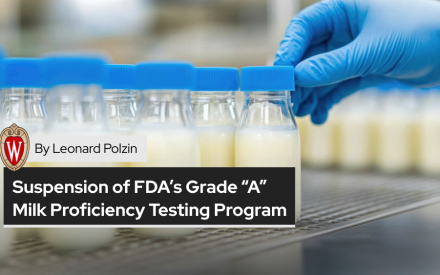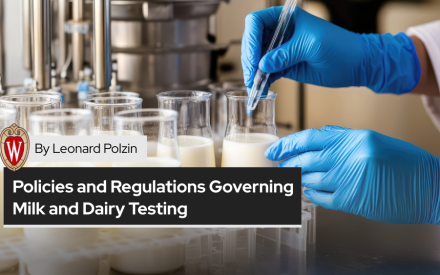This article synthesizes feedback and insights from various researchers and analysts on global dairy trends and developments. Numerous supply constraints and varying demand factors currently shape the industry. Milk production, feed prices, geopolitical developments, and environmental conditions are the major factors influencing milk prices during the first quarter of 2024. The analysis acknowledges the slight recovery in milk prices while recognizing the persistent challenges faced by the global dairy industry.
The world milk price increased by 1.7% month-over-month, resulting in $19.50/cwt of solid corrected milk for May, 2024. This increase is driven mainly by SMP and butter prices. Milk production growth in major regions has been decreasing (table 1). Despite improving farm margins and stable weather in some areas, environmental regulations and varying weather conditions are impacting production in the EU. In Ireland, dry weather has negatively affected output. In Germany, the Netherlands, and Ireland, environmental regulations are hampering supply growth. In New Zealand, milk supply growth remains negative due to poorer pasture conditions compared to the previous year. In the US, milk production has been relatively stable.
| Region | Growth Status | Factors |
|---|---|---|
| EU | Decreasing | Environmental regulations, varying weather conditions |
| Ireland | Decreasing | Dry weather |
| Germany | Decreasing | Environmental regulations |
| Netherlands | Decreasing | Environmental regulations |
| New Zealand | Decreasing | Poorer pasture conditions |
| US | Stable | Return to positive margins and little expansion |
In China, the national farm gate milk price is falling due to a constant increase in supply and struggling domestic demand. Consequently, China’s import demand for WMP is not expected to rise significantly in the short term. However, regions like Saudi Arabia and Morocco are increasing their demand for SMP, and Middle Eastern countries are raising their WMP demand. This creates a mixed outlook for global milk demand.
Current future prices are projected (table 2) to range between $21.77 and $24.95 per hundredweight until the end of the year. The Global Dairy Trade event on May 21 reported a 3.3% increase in the price index, driven primarily by butter. For New Zealand, an average price level of $21.77 per hundredweight is expected by year-end, which is 3.6% higher than the previous month. In the EU, the expected average price is $24.95 per hundredweight, marking a 7.3% increase, while the US is forecasted to see an average price of $23.14 per hundredweight, up by 3.6%. Other analysts predict a slow recovery, estimating world prices around $18.14 to $20.41 per hundredweight for this year.
| Region | Price (per hundredweight) | Percentage Change |
|---|---|---|
| Projected Range | $21.77 – $24.95 | |
| New Zealand | $21.77 | 3.60% |
| EU | $24.95 | 7.30% |
| US | $23.14 | 3.60% |
| World Prices (Estimate) | $18.14 – $20.41 |
The main factors driving the word milk price up are the global slowdown in milk supply growth. The US faces issues with declining milk yield and herd size, while the EU struggles with structural problems like aging farmers and stringent environmental regulations. New Zealand’s pasture growth remains poor. These challenges are pressuring milk prices. Additionally, low SMP production and stocks in the US and EU, combined with an expected increase in import demand in the latter part of the year, add to the upward pressure on prices.
Global feed prices are expected to rise (table 3) by 6.5% month-over-month, driven by higher demand and low global production. In the US, corn production is expected to increase due to higher yields. However, global production is expected to be lower due to declines in supply from countries like Ukraine, Zambia, Argentina, Malawi, and Turkey. This is partially offset by increased production in Brazil, the EU, China, South Africa, and Mexico.
| Region | Corn Production Trend | Reason |
|---|---|---|
| US | Increase | Increase in production |
| Global | Decrease | Declines in supply from several countries, partially offset by increases in others |
| Ukraine | Decrease | Decline in supply |
| Zambia | Decrease | Decline in supply |
| Argentina | Decrease | Decline in supply |
| Malawi | Decrease | Decline in supply |
| Turkey | Decrease | Decline in supply |
| Brazil | Increase | Increase in production |
| EU | Increase | Increase in production |
| China | Increase | Increase in production |
| South Africa | Increase | Increase in production |
| Mexico | Increase | Increase in production |
Global milk production is below the long-term trend, influenced by high input costs, adverse weather, environmental regulations, geopolitical tensions, and high inflation. These factors are significantly affecting production in major exporting countries. Over the past 26 months, milk production has been below the average trend line, which is expected to continue in the near future.
In conclusion, the current market dynamics show numerous supply constraints and varying demand factors. The outlook for milk prices and production hinges on several critical factors, including feed prices, geopolitical developments, and environmental conditions. The recent trends indicate a slight recovery in milk prices but challenges persist in the global dairy industry.



 Dairy Market Dynamics and Domestic Constraints: A Dairy Sector Assessment as of June 2025
Dairy Market Dynamics and Domestic Constraints: A Dairy Sector Assessment as of June 2025 U.S.–Canada Dairy Trade Relationship (2025–Present)
U.S.–Canada Dairy Trade Relationship (2025–Present) Suspension of FDA’s Grade “A” Milk Proficiency Testing Program – A Comprehensive Analysis
Suspension of FDA’s Grade “A” Milk Proficiency Testing Program – A Comprehensive Analysis Policies and Regulations Governing Milk and Dairy Testing: A Wisconsin Overview
Policies and Regulations Governing Milk and Dairy Testing: A Wisconsin Overview


